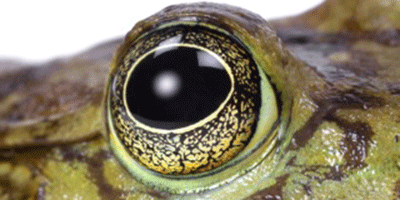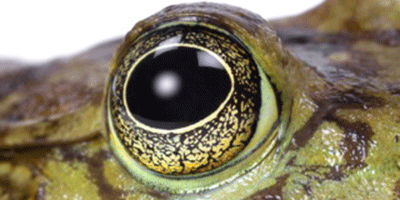Seeing Just One Photon
Scientists have explored the visual sensitivity of both humans and animals using classical light sources such as lamps and light-emitting diodes. But understanding how retinal cells respond to single photons would enable a precise calculation of their quantum efficiency—the ratio of the number of detected photons to the number of incident photons. Such measurements could lead to creative ways of engineering single-photon detectors based on nature’s design of the eye.
Leonid Krivitsky at the Data Storage Institute in Singapore and his collaborators have now devised an experiment to reliably generate single photons and measure the quantum efficiency of retinal rod cells, which were taken from ten adult male African clawed toads. Krivitsky and his team produced pairs of nanometer (nm) photons using spontaneous parametric down-conversion—a technique that involves passing a laser beam through a nonlinear crystal to produce two photons with twice the wavelength. One of the -nm photons was sent toward a photodiode, which triggered the release of the other photon into an optical fiber directed to the rod cells. The researchers, reporting in Physical Review Letters, measured current pulses induced by the absorption of the single photons and determined that the quantum efficiency of the rod cells was , remarkably similar to estimates of human rod cell quantum efficiency based on behavioral experiments.
The authors’ setup is capable of measuring the quantum efficiency of rod cells at different wavelengths, which would provide a better understanding of the functional properties of the eye. Their experiments could furthermore lead to new clues about the origins of diseases resulting in blindness. – Katherine Kornei





